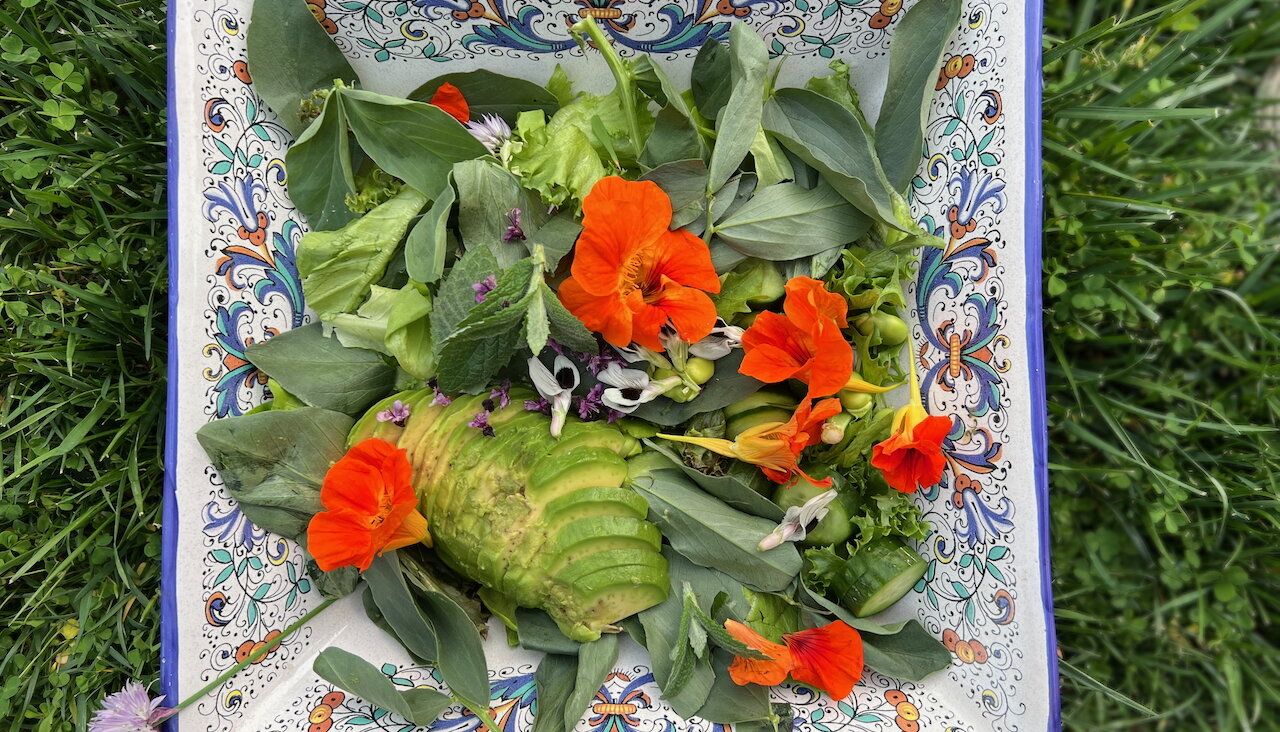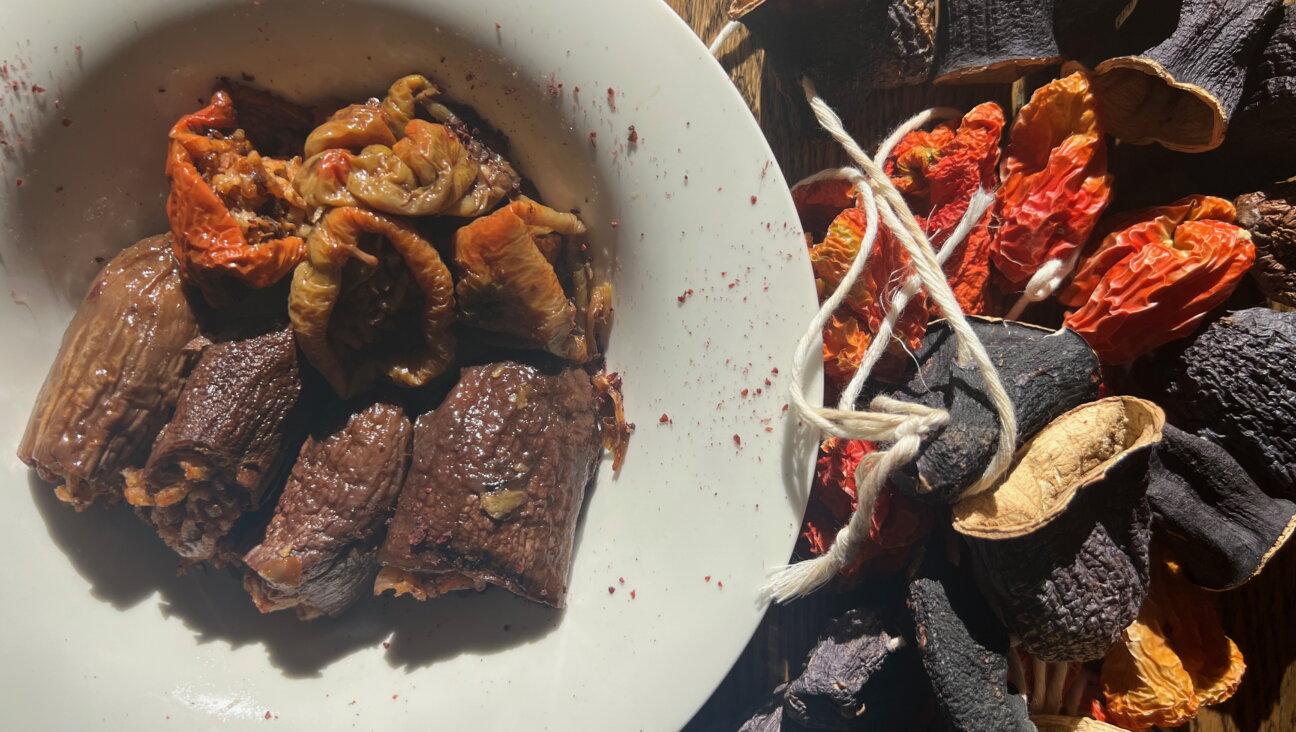A Taste of the Shtetl at Warsaw’s New Jewish Museum

Lunch Options: Museum visitors grab a bite to eat at the cafe on opening weekend. Image by Ruth Ellen Gruber
Making sure food is part of a museum is not an easy task — fresh dishes will perish, plastic ones miss the point.
But, at Warsaw’s new Museum of the History of Polish Jews, food, drink and the special Jewish relationship to eating and drinking will be a recurring thread woven throughout the yet to be installed core exhibition.
The Museum’s striking building was opened to the public April 19, but its permanent exhibition, a narrative presentation of 1,000 years of Jewish life, won’t debut until next year.
“We don’t have separate sections on discreet themes such as women, children, dress, or food,” said Barbara Kirshenblatt Gimblett, the NYU scholar in charge of the team putting together the core exhibition. “There are no encyclopedia entries.” Rather, she said, food, drink and issues related to them would be addressed within the context of the chronological narrative.
For example, she said, the first Hebrew book printed in Poland was Isaac of Dueren’s “Sha’arei Dura,” a 16th century treatise about ritual purity, mainly dealing with the laws of kashrut and women’s ritual purity. “The book tells how to apply the laws of kashrut to everyday life,” she said. “The first pages are about salting meat” and there are practical descriptions of what to do in specific circumstances.
In the medieval gallery, she said, “there will be a whole section on trade, including the trade of spices, as an aspect of the economy.”
In another gallery there will be a section mocking up a market stall, with a focus on three key items of the Jewish table — garlic, goose and herring. Using old texts and other sources, she said, “We’ll show how goose fat was the ‘Jewish lard,’ how garlic was considered an aphrodisiac, and how there were discussions in a 17th century Yiddish medical manual about whether a fish could be considered meat.”
One particular hero of the exhibit is Ber of Bolechow, an 18th century wine importer who wrote an autobiography in which he detailed wine purchasing journeys to the Tokaj region of northern Hungary. “Jews were important in the alcohol trade, and we will be putting this into historical context,” she said.
In addition to these historical references, visitors to the museum will be able to enjoy a first-hand taste of Polish Jewish cuisine in the museum’s restaurant. “They asked me to prepare a menu with local and seasonal dishes that are Jewish — but which Polish visitors will also recognize as part of the culinary tradition.”
The Forward is free to read, but it isn’t free to produce

I hope you appreciated this article. Before you go, I’d like to ask you to please support the Forward.
Now more than ever, American Jews need independent news they can trust, with reporting driven by truth, not ideology. We serve you, not any ideological agenda.
At a time when other newsrooms are closing or cutting back, the Forward has removed its paywall and invested additional resources to report on the ground from Israel and around the U.S. on the impact of the war, rising antisemitism and polarized discourse.
This is a great time to support independent Jewish journalism you rely on. Make a gift today!
— Rachel Fishman Feddersen, Publisher and CEO
Support our mission to tell the Jewish story fully and fairly.
Most Popular
- 1

Culture Cardinals are Catholic, not Jewish — so why do they all wear yarmulkes?
- 2

Fast Forward Ye debuts ‘Heil Hitler’ music video that includes a sample of a Hitler speech
- 3

News School Israel trip turns ‘terrifying’ for LA students attacked by Israeli teens
- 4

Fast Forward Student suspended for ‘F— the Jews’ video defends himself on antisemitic podcast
In Case You Missed It
-

Yiddish קאָנצערט לכּבֿוד דעם ייִדישן שרײַבער און רעדאַקטאָר באָריס סאַנדלערConcert honoring Yiddish writer and editor Boris Sandler
דער בעל־שׂימחה האָט יאָרן לאַנג געדינט ווי דער רעדאַקטאָר פֿונעם ייִדישן פֿאָרווערטס.
-

Fast Forward Trump’s new pick for surgeon general blames the Nazis for pesticides on our food
-

Fast Forward Jewish feud over Trump escalates with open letter in The New York Times
-

Fast Forward First American pope, Leo XIV, studied under a leader in Jewish-Catholic relations
-
Shop the Forward Store
100% of profits support our journalism
Republish This Story
Please read before republishing
We’re happy to make this story available to republish for free, unless it originated with JTA, Haaretz or another publication (as indicated on the article) and as long as you follow our guidelines.
You must comply with the following:
- Credit the Forward
- Retain our pixel
- Preserve our canonical link in Google search
- Add a noindex tag in Google search
See our full guidelines for more information, and this guide for detail about canonical URLs.
To republish, copy the HTML by clicking on the yellow button to the right; it includes our tracking pixel, all paragraph styles and hyperlinks, the author byline and credit to the Forward. It does not include images; to avoid copyright violations, you must add them manually, following our guidelines. Please email us at [email protected], subject line “republish,” with any questions or to let us know what stories you’re picking up.















